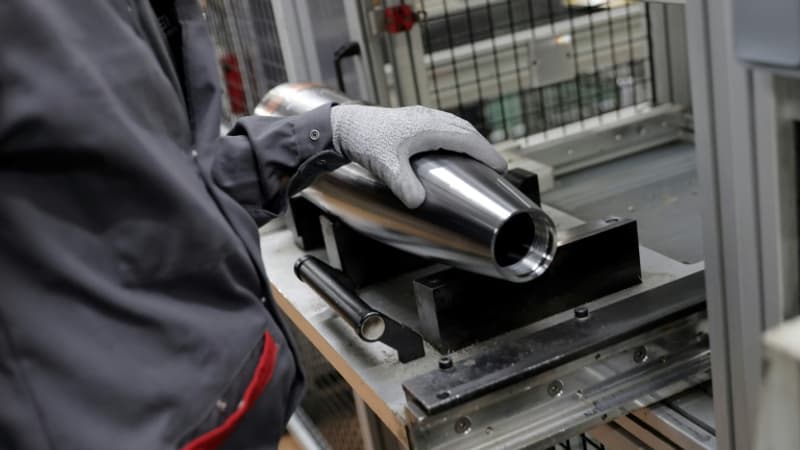The war in Ukraine has put the replenishment of ammunition stocks back at the center of the national and international defense strategy. In a high intensity conflict, consumption is much higher than production capacity and the only way to prepare for this eventuality is to have stocks and control of the production chain. To do this, France must rethink its strategy in this area, according to the conclusions of a parliamentary report.
Having become, in the decades of peace after the fall of the Wall, “a budgetary adjustment variable”, ammunition must now be the object of a policy simultaneously guided by the emergency and the challenges to come, according to this co-reported document. by the deputies Vincent Bru (Modem, Pyrénées-Atlantique) and Julien Rancoule (RN, Aude). Because ammo takes so long to produce as it runs out quickly.
The task is all the more complex as the stakes differ from the assault rifle bullet to the guided missile through the medium-range projectile. But whatever the object studied, the report draws uplifting comparisons to the mask crisis at the start of the covid-19 epidemic.
The example of the masks.
The mask shortage “highlights the limitations of the decade-long preferred approach of eliminating inventory in favor of a just-in-time supply model,” the authors write. However, the stocks allow “to cope with a high rate of attrition, characteristic of high intensity” – the great war State against State – anticipated by the French general staff since the 2010s.
The invasion of Ukraine by Russia on February 24, 2022, an archetype of this high intensity, de facto confirmed the return of these clashes between powers, with a massive use of ammunition by the belligerents. And France, like its NATO allies, has been absorbing kyiv’s huge demands for a year, while safeguarding a sufficient operational stock in case of direct aggression.
Looking ahead, the report puts forward three conflict scenarios: a major NATO commitment, a war limited to Europe in which France would be “automatically” a framework nation, or an attack on overseas territories with filigree fear of confrontation. with China in the Indo-Pacific.
Three scenarios, three strategies, which question the arbitration between “rusticity and technology”. In other words, between simple but robust equipment that can be repaired on the battlefield and sophisticated equipment, efficient but full of electronics and therefore exposed to rapid degradation.
mass and technology
Here too, the conflict in Ukraine has changed perceptions, in particular the strategy of the former Red Army, capable of absorbing heavy losses in order to drown its adversary with the “mass”. A concrete case that illustrates “not the dilemma between mass and technology but their indispensable complementarity”, argue the authors, underlining the coexistence on the Ukrainian side of “very old systems present in large numbers (…), together with others much older modern systems but in smaller quantities”. Therefore, the report recommends “favoring the mix of ammunition”, with an emphasis on “mass”.
As regards the small caliber, Members recall that, particularly for reasons of profitability, the supply of bullets in France has been largely outsourced. This choice, in a context of dilemma between profitability and sovereignty, is now weakened.
And propose “a relocation of the small-calibre sector at the French or, failing that, European level.” This decision would require that France become not only a producer but an exporter, and that the companies enjoy the “regularity of state orders.”
Finally, the report warns against critical imported supplies: aluminum, nickel, titanium and palladium, but also electronic components and semiconductors, composite materials, powders. With this too, the need to prepare for trade flows is reduced by a possible other crisis, with its share of weakening of partnerships and overthrow of alliances.
Source: BFM TV


